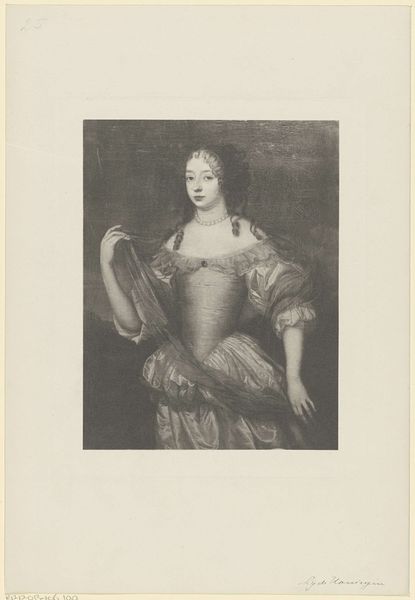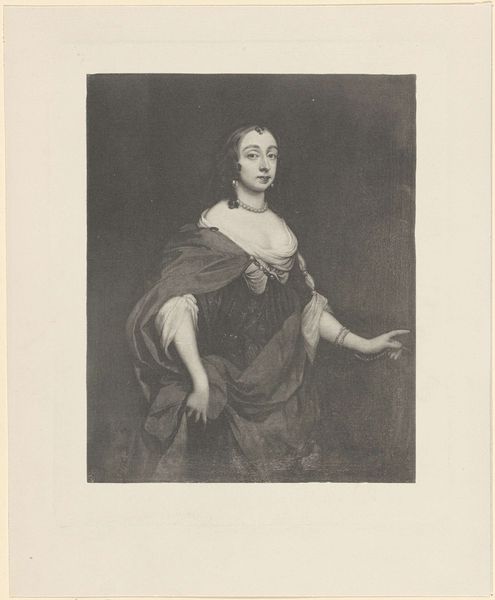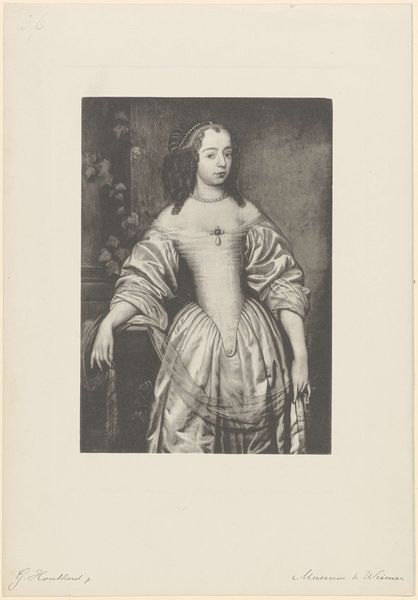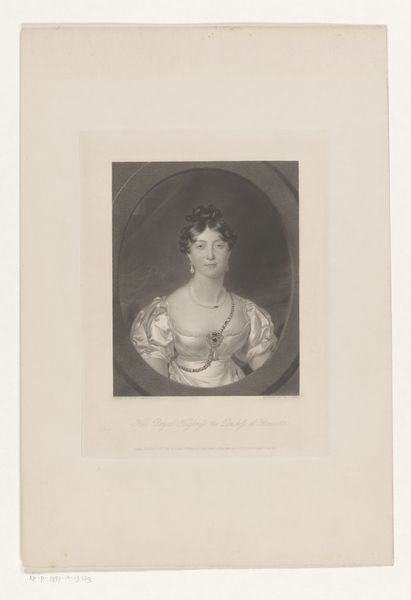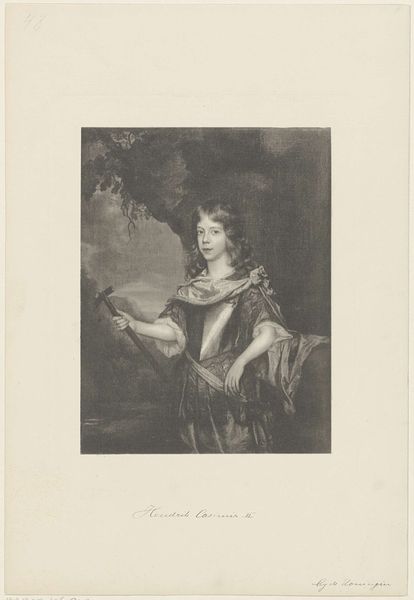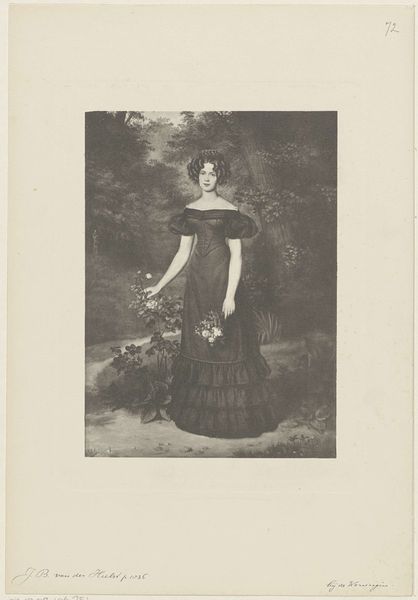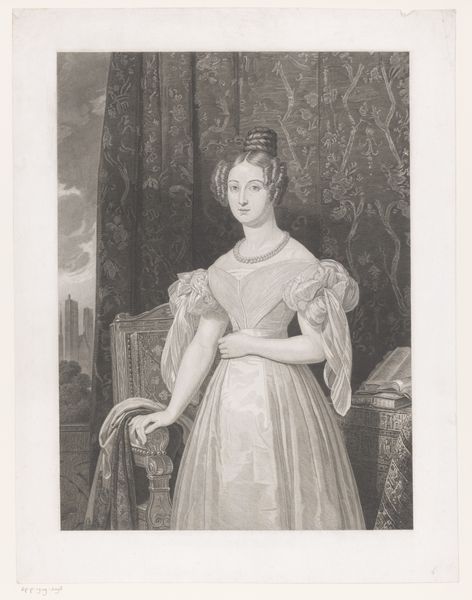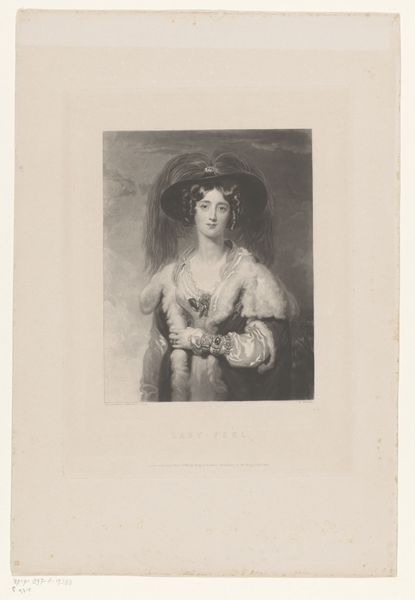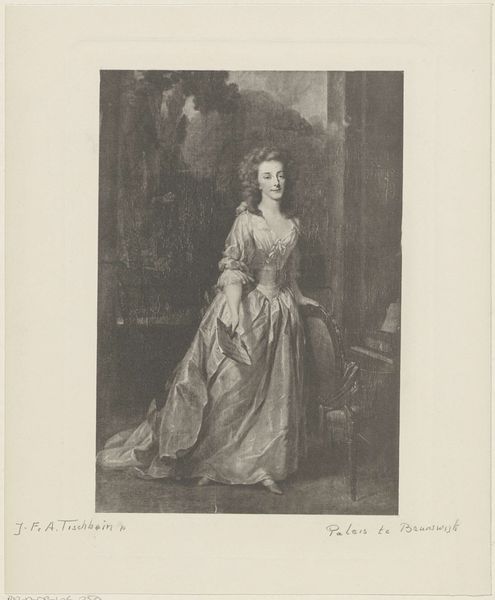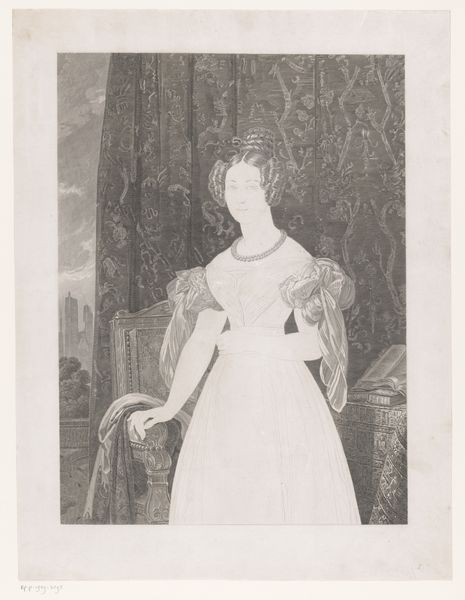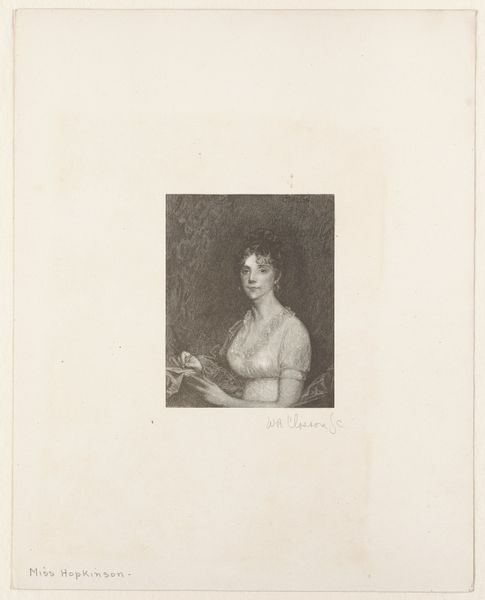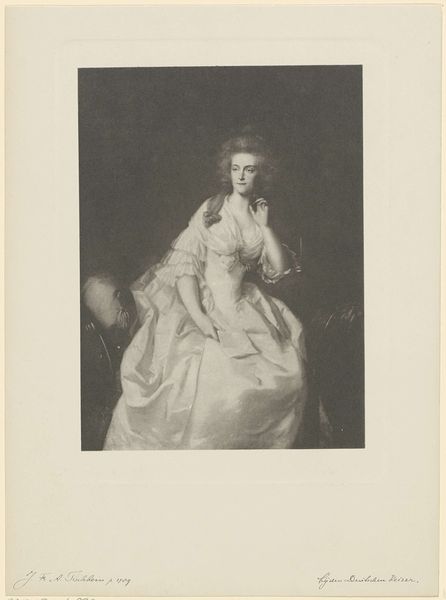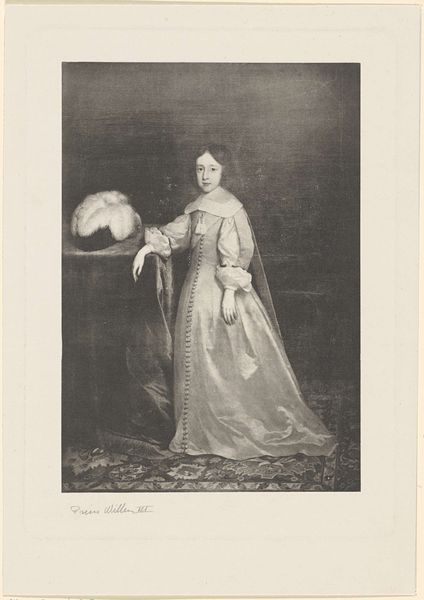
Dimensions: height 219 mm, width 178 mm
Copyright: Rijks Museum: Open Domain
Editor: So, here we have an engraving from the 19th century, titled "Portret van Maria, prinses van Oranje"—that's "Portrait of Mary, Princess of Orange" in English. It's hanging in the Rijksmuseum. There's something very… stately about it. It feels like it's trying to say something grand about history, with that kind of old engraving style. What do you see in it? Curator: Oh, absolutely. It's like peering into a different era, isn't it? For me, beyond the Baroque grandeur, there's a real sense of… melancholy. Think about what being a princess actually entailed. Duty, expectation… sacrifice. She's beautiful, yes, adorned with pearls, but look at her eyes. Don't they hint at a deeper story? What's your read on her expression? Editor: I guess there is a little sadness there, now that you point it out. She looks elegant, but a bit tired, or like she's seen something difficult. So this is not just a pretty picture? Curator: Precisely! It's a coded message about power and responsibility. The landscape behind her isn't just a backdrop; it's a symbolic realm, a controlled wilderness mirroring the constraints of her position. What's truly wild can’t be contained. It might be a yearning to be, quite simply, Mary. Free to wander. That ribbon in her hand… it almost feels like she is holding tightly to a life that she almost, but does not have. Don’t you think? Editor: That makes the portrait so much more interesting now. It is about the weight of responsibility on the woman. I was really just seeing it as an important person’s portrait, without realizing that that itself has deeper cultural meaning. Curator: Exactly! It’s in these hidden spaces within a piece of art, that it whispers a silent symphony about identity, position, constraints and unspoken desires, doesn't it?
Comments
No comments
Be the first to comment and join the conversation on the ultimate creative platform.
